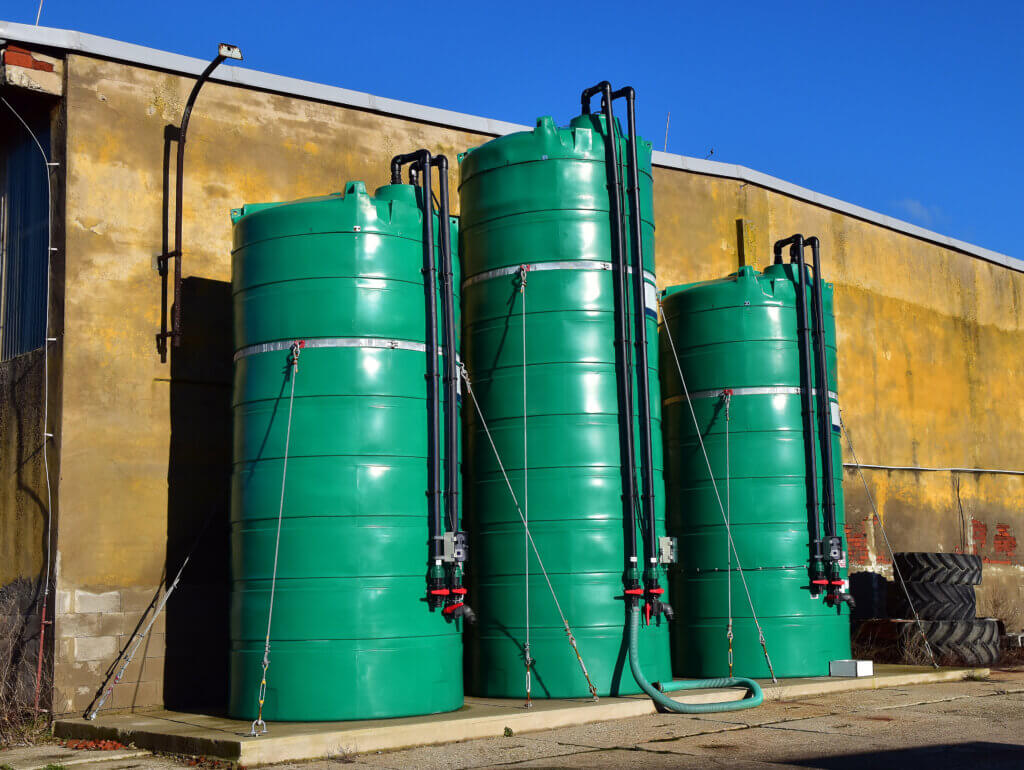Fertilizers play a significant role in agriculture, supplementing the soil with essential nutrients for plant growth. Urea fertilizer, in particular, is a widely used nitrogen source in agriculture. However, the rapid release of nitrogen from urea has been shown to cause several environmental problems, from leaching to volatilization and runoff. In response to these issues, coated urea fertilizers have been increasingly developed as a solution.
Manufacturers design coated urea fertilizers to release nitrogen in a controlled manner, ensuring that the nutrients are released gradually and efficiently absorbed by the plants. This topic aims to provide a comprehensive understanding of coated urea fertilizers, including their benefits, types of coating, application methods, safety concerns, and logistics processes involved in their transportation.
Introduction to Coated Urea Fertilizers

Coated urea fertilizers are fertilizers in which urea granules are coated with a material to slow down the release of nitrogen in the soil. The coating can be made of various materials, from polymers to resins and sulfur.
Whatever material is used to coat these urea granules, their primary responsibility is to help protect them from volatilization and leaching, which can lead to nitrogen loss and reduce the fertilizer’s effectiveness. By slowing down nitrogen release, coated urea fertilizer provides a more consistent supply of nutrients to the plants over an extended period, improving their growth and yield.
Coated urea fertilizers are used widely in modern agriculture for several crops, including grains, oilseeds, vegetables, and fruits. It is also often employed in situations with a high risk of nitrogen loss, such as in sandy soils, areas with high rainfall, and during the rainy season.
Composition of Coated Urea Fertilizers
Coated urea fertilizers are essential in modern agriculture and offer several advantages over traditional urea fertilizers. The composition of these fertilizers varies depending on the manufacturer, but generally, they consist of a urea core coated with a material that helps to regulate nitrogen release. As we’ve seen earlier, the coating could be made of a polymer or a resin, and sometimes sulfur is added.
Polymers, such as polyethylene and polyurethane, are the prevalent coating materials for urea fertilizers. These materials are preferred for their ability to control the rate at which the urea granules release nitrogen into the soil. Manufacturers adjust the coating thickness to control the release rate, with thicker coatings leading to slower release rates.
On the other hand, manufacturers also use resins as coatings for these fertilizers. Resins provide a tougher, more durable coating that can resist abrasion and degradation, ensuring the nitrogen is released over an extended period. They are also ideal for use in high-temperature environments.
In other cases, sulfur acts as a coating material. Sulfur-coated urea is a slow-release fertilizer commonly used in crops such as corn, wheat, and soybeans. The sulfur coating on the urea granules is slowly oxidized, releasing nitrogen over time. As the demand for sustainable agricultural practices continues to grow, coated urea fertilizers will likely play an essential role in meeting farmers’ needs while protecting the environment.
Types of Coated Urea Fertilizers
Coated urea fertilizers come in different types, each designed primarily to improve nitrogen uptake efficiency in plants, reduce the risk of nutrient loss due to leaching, and minimize the environmental impact. The distinction for each type of fertilizer depends primarily on the coating material. Let’s look at the different kinds of coated urea fertilizers available.
- Polymer-Coated Urea Fertilizers
These fertilizers are most prevalent among farmers because of their ability to release nitrogen slowly. As the name suggests, the polymer-coated fertilizers are coated with a polymer insoluble in water, enabling a gradual release of nitrogen into the soil over an extended period.
The advantage of this slow-release feature of polymer-coated urea fertilizers is twofold: it enhances the plant’s nitrogen uptake efficiency and lowers the risk of nitrogen loss resulting from leaching.
- Sulfur-Coated Urea Fertilizers
Sulfur-coated urea (SCU) fertilizers have become popular among farmers due to their remarkable ability to enhance crop growth. These fertilizers are specially formulated by coating urea with elemental sulfur, a gradual-release agent. The percentage of coating on SCU fertilizers is customizable between 10% to 30% based on the preferred release rate.
The slow-release property of SCU fertilizers enables plants to optimize their nitrogen uptake efficiency, leading to improved growth and yield. Furthermore, these fertilizers reduce the likelihood of nutrient loss caused by leaching and provide farmers with a more sustainable and environmentally-friendly fertilizer option.
- Polymer-Sulfur-Coated Urea Fertilizers
Polymer-sulfur-coated-urea (PSCU) fertilizers are an innovative fertilizer option that combines the unique benefits of PCU and SCU fertilizers. Manufacturers formulate PSCU fertilizers with a special coating that combines a water-insoluble polymer and elemental sulfur, providing a multifaceted approach to enhancing plant growth. The polymer coating on PSCU fertilizers plays a crucial role in gradually releasing nitrogen into the soil. In contrast, the sulfur coating helps regulate the release rate to ensure consistency in nutrient availability.
Combining both coatings provides PSCU fertilizers with both slow-release characteristics and increased nitrogen uptake efficiency, leading to a more sustainable and effective fertilizer option for farmers. By utilizing PSCU fertilizers, plants can better absorb the essential nutrients they need for growth, resulting in better crop quality and yield.
- Biodegradable Coated Urea Fertilizers
The biodegradable coated urea (BCU) fertilizers represent a relatively new development in coated urea fertilizers. They are formulated by coating the urea with a specially designed biodegradable material that gradually breaks down in the soil, releasing the urea into the earth in a controlled and sustained manner.
Similar to other coated urea fertilizers, the slow-release property of BCU fertilizers enhances the plant’s nitrogen uptake efficiency. Furthermore, the coating’s biodegradable nature makes these fertilizers a more sustainable and eco-friendly option as it minimizes the environmental impact. By utilizing BCU fertilizers, farmers can enhance crop yield and contribute significantly to preserving the natural ecosystem.
In conclusion. Coated urea fertilizers have revolutionized the world of agriculture by providing a more efficient and sustainable way of delivering nitrogen to crops. The different coated urea fertilizers offer several slow-release characteristics, allowing farmers to choose the most appropriate fertilizers for their needs. Regardless of the fertilizer type, each provides unique benefits to help farmers achieve better yields and minimize environmental impact.
Benefits of Coated Urea Fertilizers
Compared to conventional uncoated urea fertilizers, numerous advantages are associated with coated urea fertilizers.
- Reduced Nutrient Loss
Fertilizers containing coated urea are equipped with a layer of protected coating, decelerating nitrogen release into the soil, thus mitigating the potential hazard of nitrogen loss caused by volatilization or leaching. Consequently, the utilization of nutrients is enhanced, resulting in a more efficient and productive application of fertilizers.
- Improved Crop Yield
One of the well-known advantages of utilizing coated urea fertilizers is their ability to dispense nutrients over an extended duration gradually. By doing so, crops have a continuous and sustained supply of nitrogen, which facilitates better growth and higher yields.
- Reduced Fertilizer Application Frequency
Coated urea fertilizers exhibit the notable benefit of necessitating less frequent applications than conventional urea fertilizers. This property can significantly limit the frequency of fertilizer application required by farmers. As a result, there are considerable savings regarding time, labor, and financial costs.
- Environmental Benefits
Coated urea fertilizers can deliver several environmental advantages by curtailing nutrient loss and enhancing nutrient use efficiency. As a result, it reduces the environmental impact of fertilizer use, encompassing a decrease in greenhouse gas emissions, an enhancement in water quality, and mitigation of eutrophication.
- Better Crop Quality
Another significant advantage of coated urea fertilizers is their ability to enhance crop quality. This benefit is achieved through the sustained release of nutrients, which facilitates more consistent growth and development of plants. As a result, farmers that utilize coated urea fertilizers can contribute to a more robust and higher quality crop yield.
Factors Affecting Their Performance
Coated urea fertilizers have revolutionized how farmers provide essential nutrients to their crops. As we’ve seen, these fertilizers increase crop yields, improve nutrient uptake and enhance plant growth.
However, the performance of these fertilizers is not always consistent, and several factors can impact their effectiveness. As such, farmers looking to achieve optimal results must understand the various factors that can affect the performance of coated urea fertilizers. From soil pH to crop type and growth stage, each element plays a critical role in determining the efficacy of these fertilizers.
For this context, let’s dive into the factors that can impact the performance of coated urea fertilizers and learn how to maximize their effectiveness for superior crop growth and yield.
- Soil Temperature and Moisture
Nitrogen release from coated urea fertilizers is subject to the influence of soil temperature and moisture levels. The rate of nitrogen release tends to be more rapid in soils with higher temperatures and levels of moisture. Consequently, soil temperature and moisture levels can play a significant role in determining the efficacy of these fertilizers. It is essential to consider these factors when deciding on the appropriate application of such fertilizers.
- Soil pH
The soil’s pH level can also impact the release rate of coated urea fertilizers. The coating on the urea granules may dissolve at varying rates depending on the soil’s pH level. In alkaline soils with high pH levels, the coating may dissolve more gradually, resulting in a slower nitrogen release rate. Hence, farmers must consider the soil’s pH when selecting an ideal fertilizer to provide the optimal nutrient supply for plants.
- Coating Thickness and Composition
The coating material’s thickness and chemical composition can also influence the nitrogen release rate from coated urea fertilizers. Regarding thickness, a thicker coating can impede nitrogen release, leading to a more gradual release rate. Conversely, a thinner layer may allow for a more rapid release of nitrogen.
Additionally, different types of coating may possess varying properties and release rates depending on their specific chemical composition. Choosing coating thickness and composition is vital when selecting a coated urea fertilizer for a particular soil and crop condition.
- Soil Microbial Activity
The effectiveness of a coated urea fertilizer also depends on the presence and activity of microorganisms in the soil. These microorganisms can break down the coating material surrounding the urea granules, resulting in a faster release rate. However, they can also consume the nitrogen themselves, potentially limiting the amount available to the plants. Therefore, farmers must consider the microbial activity of the soil.
- Application Method and Timing
If these fertilizers are applied too early or late in the growing season, the utilization of nutrients may be suboptimal. Using an improper application or failing to incorporate fertilizer into the soil can also reduce its effectiveness.
- Crop Type and Growth Stage
The crop type and growth stage can also influence the performance of coated urea fertilizers. Different crops possess varying nutrient requirements, and the fertilizer’s release rate must be tailored to meet the crop’s needs. Anything other than that would result in inadequate nutrient uptake, potentially leading to poor crop performance.
Aside from the crop type, the application timing is also crucial, as applying the fertilizer at an incorrect growth stage may not provide the necessary nutrient for optimal growth and yield. Hence, consider the crop type and its growth stage before applying these fertilizers.
Safety and Environmental Concerns of Coated Urea Fertilizers
Several advantages have made coated urea fertilizers a popular choice among farmers. However, like any chemical product, these fertilizers have specific safety and environmental concerns that must be considered in different instances, from transportation to application.
Firstly, the coating materials on these fertilizers can pose a health hazard if inhaled or ingested, resulting in respiratory problems or more severe cases if consumed in large quantities. Environmental pollution is another concern of these fertilizers. The coatings can break down into harmful chemicals capable of leaching into the soil and water. On the other hand, coated urea fertilizers can also contribute to air pollution by releasing ammonia and other gases during application.
Finally, overuse of coated urea fertilizers can lead to soil degradation, as the nitrogen in the fertilizer can become concentrated in the topsoil and lead to soil acidification and nutrient imbalance.
Farmers and agricultural professionals ensure they use fertilizers safely and responsibly to minimize potential hazards and protect the environment. Hence, we need to understand safety concerns and implement appropriate protocols to ensure we safeguard ourselves and the environment while harnessing the benefits of these fertilizers.
Shipping Coated Urea Fertilizers
Coated urea fertilizers are a significant aspect of modern agriculture. As such, transporting these fertilizers is a multifaceted process that necessitates meticulous preparation, active surveillance, and proficient implementation to ensure shippers and shipping lines overcome specific challenges associated with the process.
Logistics Challenges Involved In Shipping Coated Urea Fertilizers
Shipping these fertilizers present several challenges. However, shippers must address one significant challenge: ensuring the fertilizers remain stable during transit. Typically, coated urea fertilizers are sensitive to moisture, temperature, and pressure changes, which can cause the coating to break down and make the fertilizer release nitrogen quickly.
Another challenge is ensuring the fertilizer is not contaminated during transport. Coated urea fertilizers are often mixed with other chemicals to produce a specific blend that suits each crop’s needs. If the fertilizer is contaminated during transport, it may not be suitable for use, resulting in significant financial losses for the farmer.
Safety Measures For Shipping Coated Urea Fertilizers
While these challenges threaten the effectiveness of these fertilizers, shippers can mitigate them by employing safety measures during transportation. First, the fertilizer must be adequately packaged and labeled to ensure it’s handled correctly at every phase of the logistics process. The packaging should be sturdy and resistant to moisture and pressure changes, and the label should indicate the package’s contents and any other special handling requirements.
Shippers must convey coated urea fertilizer in specialized containers specifically engineered to uphold a consistent temperature and moisture level. In addition, these containers should have sensors that effectively monitor the interior conditions of the containers, enabling the shipping company to be notified of any fluctuations that may occur.
Finally, shipping companies should implement a comprehensive quality control program to safeguard against potential fertilizer contamination during transport. This program should incorporate a consistent inspection regimen of containers and fertilizers to ensure they comply with the requisite standards.
Future Outlook and Potential Developments in Coated Urea Fertilizer
In the future, there are several potential developments in coated urea fertilizers that could improve their effectiveness and sustainability. For one, advances in coating technology could lead to the development of slow-releasing coatings that release nitrogen over an extended period, reducing the need for frequent fertilizer applications.
The advent of precision agriculture techniques makes it possible to tailor fertilizer applications to specific crops and soil needs. And with time, coated urea fertilizers could be further developed to be more responsive to these needs. Other potential developments include creating more biodegradable coatings, nanocoatings, and alternative coating materials that reduce the fertilizer’s environmental impact.
The future outlook for coated urea fertilizers could impact several aspects of agriculture, including the prevalence of shipping these products. Developing new and improved coated urea fertilizers would increase demand for these products and the shipping process.
These changes would also affect shipping requirements, including better handling and storage requirements and better environmental considerations. Coated urea fertilizers already play a significant aspect in modern agriculture, and it’s poised to continue with developments in their effectiveness and demand.
Ship Your Coated Urea Fertilizers With Total Connection
With a projected increase in development and demand for coated urea fertilizers, there is a need to explore competent shipping services that ensures these fertilizers arrive in pristine condition. If you’re searching for such a service, look no further than Total Connection!
At Total Connection, we understand the importance of timely and safe delivery of fertilizers, especially for agricultural purposes. As such, our expert team develops a streamlined shipping process to ensure your products arrive on time, in prime condition, and in compliance with shipping regulations and requirements.
Our service is efficient and reliable, with a focus on customer satisfaction. We offer a range of shipping options and collaborate with the best carriers and transport companies to ensure your coated urea fertilizers are handled carefully throughout the shipping process. Additionally, Total Connection offers competitive pricing without affecting service quality.
Don’t settle for subpar shipping services for your coated urea fertilizers. Choose Total Connection for efficient and reliable shipping services that you can trust. Contact us today to learn more about our services and how we can help streamline your shipping needs.





